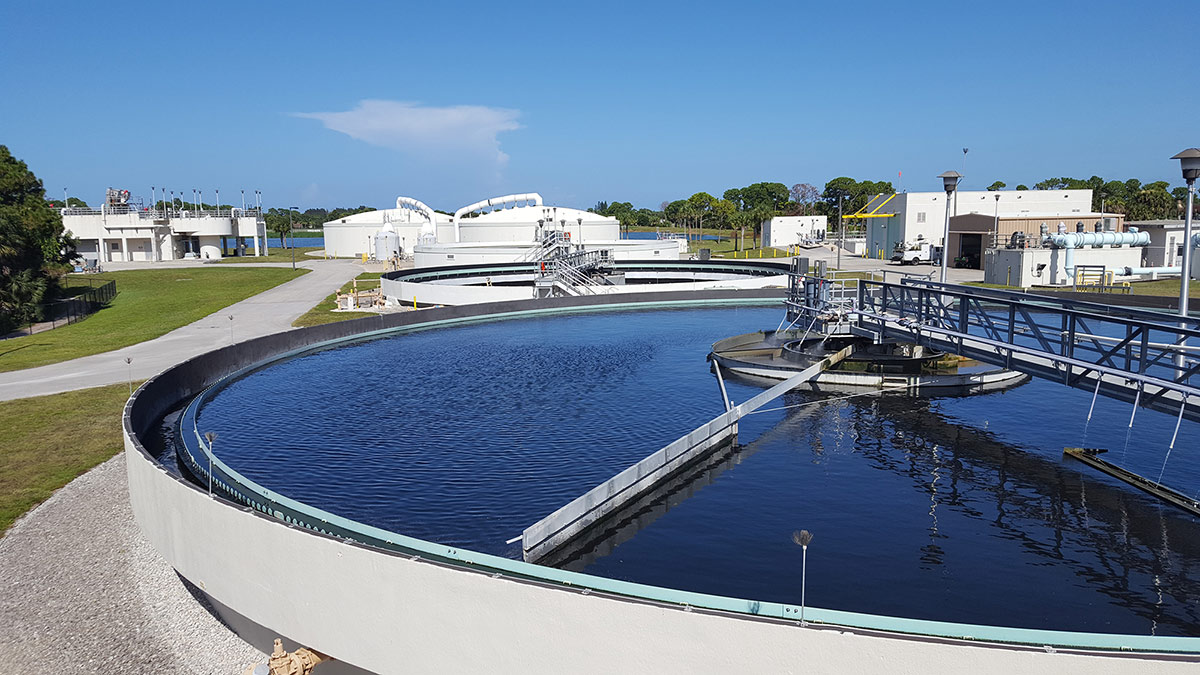Strategic Approaches to Boost Drainage Therapy Efficiency and Decrease Ecological Effect
In the world of waste water treatment, the quest for enhanced performance and lowered ecological effect is a continuous difficulty that requires critical services. The combination of sophisticated treatment innovations, energy-efficient processes, resource recovery strategies, boosted nutrient removal techniques, and wise tracking and control systems stands for a multifaceted framework for resolving these pushing issues.
Advanced Treatment Technologies
Advanced membrane purification systems have actually transformed sophisticated wastewater therapy processes, considerably enhancing the removal of impurities. This technology has proven to be extremely efficient in removing a large array of impurities, consisting of drugs, heavy steels, and organic substances, which are frequently testing to eliminate with traditional treatment techniques.
Additionally, membrane layer filtration systems supply various benefits over conventional therapy approaches. They need much less room, produce higher-quality effluent, and are a lot more resistant to variations in influent water top quality. In addition, these systems are very flexible and can be easily integrated into existing treatment plants or utilized as standalone units for decentralized applications. As the need for clean water continues to climb, the fostering of innovative membrane purification modern technologies is essential to make sure reliable and sustainable wastewater therapy techniques.
Energy-Efficient Procedures
The integration of energy-efficient procedures in wastewater treatment systems is essential for optimizing source use and decreasing operational prices. By executing energy-efficient technologies, therapy plants can considerably reduce their carbon impact and general ecological effect. One crucial technique to boosting power efficiency in wastewater treatment is the use of innovative aeration systems, such as fine bubble diffusers or surface area aerators, which can improve oxygen transfer effectiveness and reduce power usage. Additionally, including energy recovery systems, like anaerobic food digestion for biogas manufacturing or making use of excess warm for thermal processes, can assist balance out power needs and advertise sustainability.
Additionally, enhancing process control and automation via the use of sophisticated sensing units and checking systems can improve total power performance by adjusting procedures in real-time based on real demand and problems. Carrying out energy audits and consistently keeping an eye on energy efficiency indications are important methods to determine areas for improvement and track energy-saving initiatives effectively. Overall, the fostering of energy-efficient procedures in wastewater treatment not only benefits the setting yet additionally adds to long-lasting price financial savings and functional sustainability.
Resource Recuperation Approaches
With a concentrate on enhancing resource use and sustainability in wastewater treatment systems, the implementation of resource recovery approaches arises as a critical aspect in boosting operational efficiency. Source healing strategies in wastewater therapy include the identification and removal of important resources from the waste stream, therefore transforming what was once considered waste into a beneficial property. By applying resource recovery techniques such as nutrient removal and healing, power generation from raw material, and the manufacturing of multiple-use water, wastewater treatment plants can lessen ecological impact while making best use of performance.

Boosted Nutrient Elimination Strategies
Applying sophisticated nutrient elimination techniques is important for maximizing the efficiency of wastewater therapy systems. One of the key strategies used for improved nutrient elimination is the process of organic nutrient elimination (BNR), which includes the elimination of nitrogen and phosphorus through biological procedures.

In enhancement to BNR, progressed treatment techniques such as membrane bioreactors (MBRs) and constructed wetlands can likewise be used to improve nutrient elimination effectiveness. By integrating these sophisticated nutrient removal techniques into wastewater therapy municipalities, industries and systems can effectively reduce nutrient air pollution and protect the environment.
Smart Monitoring and Control Systems
Making use of innovative innovation, the integration of clever tracking and control systems transforms the functional effectiveness of wastewater treatment centers. These systems incorporate innovative sensing units Our site and data analytics to continually keep an eye on key criteria such as pH degrees, turbidity, dissolved oxygen, and circulation rates in real-time. By accumulating and examining this data, drivers can acquire valuable understandings into the performance of the therapy procedures, allowing positive adjustments to maximize treatment performance.
Smart tracking and control systems also sustain remote tracking capacities, permitting drivers to accessibility real-time information and control functions from off-site areas. This remote access boosts functional versatility and responsiveness, enabling swift interventions in instance of system malfunctions or variations in influent top quality. In addition, the anticipating maintenance capabilities of these systems aid stop equipment failings and reduce downtime, inevitably improving the total reliability of wastewater therapy operations (Waste Water Treatment).
Final Thought
In final thought, tactical methods such as innovative therapy modern technologies, energy-efficient processes, resource recuperation approaches, enhanced nutrient removal techniques, and smart monitoring and control systems play an important function in improving wastewater therapy effectiveness and reducing ecological influence. By applying these strategies, wastewater therapy plants can boost their total efficiency, click here to read reduce energy consumption, recover valuable sources, and make certain compliance with environmental regulations. These strategies are essential for reliable and lasting wastewater administration methods.

In conclusion, calculated approaches such as sophisticated therapy technologies, energy-efficient procedures, source healing techniques, boosted nutrient removal methods, and clever monitoring and control systems play a crucial role in boosting wastewater treatment effectiveness and minimizing environmental effect.
Comments on “Cutting-edge Methods to Waste Water Treatment Technologies”